The black summer bushfires almost destroyed this place. Look at it now
Having defended their NSW property from the flames, the owners of this blissful hideaway came up with a plan.
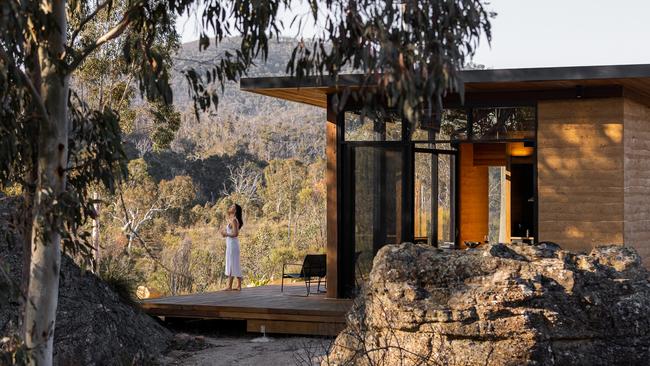
We’re only minutes away from our mid-western NSW retreat when the landscape changes so dramatically I halve the car’s speed so we can absorb our new surrounds. After driving through kilometres of gently undulating farmland outside the heritage village of Rylstone, we’re suddenly travelling beside soaring sandstone formations, their surfaces sprinkled with gumtrees and streaked by the passage of time.
The road rises and curves near the ancient rock face before delivering us to the gates of Wollemi Retreat. Set on 40ha, the eco-escape sits at the edge of the UNESCO World Heritage-listed Wollemi National Park, renowned for its sweeping escarpments and distinctive sandstone outcrops called pagodas.
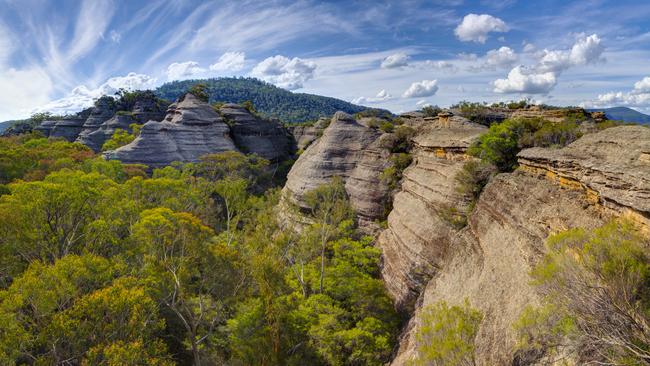
Unassuming at first glance, our cabin accommodation is perched on a hilltop among lichen-covered boulders, its golden brown rammed-earth walls blending with the surrounds. But this is no modest bush hut. With stylish furnishings and floor-to-ceiling windows providing glorious views towards the mountain that rises opposite, our one-bedroom escape is a luxury eyrie offering a front-row seat to the wilderness.
Named Wambal, the local Indigenous Wiradjuri word for mountain, the getaway is one of two self-contained cabins at Wollemi Retreat. The second, Winyu (which means waterhole), is nestled near the property’s meandering waterway, Coxs Creek.
Owner Denny Payne, who works in recruitment, says he bought the land as a “weekender” in 2008, attracted to the dramatic scenery and frustrated by his attempts to enter the Sydney property market. After initially camping on the property, in 2012 Payne built a three-bedroom house beneath the striated mountain that borders the retreat.
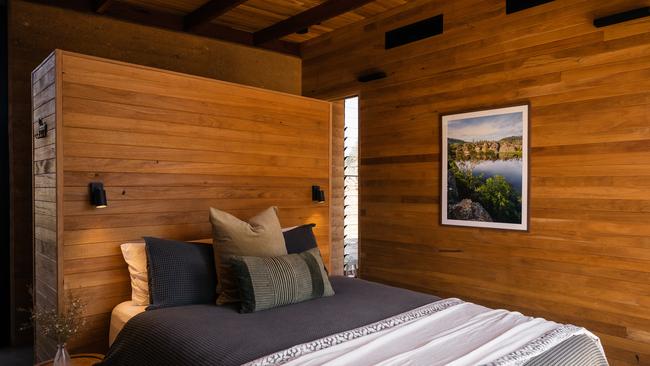
His decision to list the house as holiday accommodation led to an eco-tourism award. But the accolade turned out to be an own goal as the home became so popular Payne had difficulty reserving it for his own use. In response, Payne and his interior designer wife, Gaby Cara, began to plan the addition of two cabins.
Then came the devastating summer bushfires of 2019-20, which saw the couple defending their property with the help of family, firefighting crews and helicopters. The home was saved and, serendipitously, the couple became friends with one of the volunteer fireys, Ashley Barratt, a local builder who specialises in rammed earth and timber houses. Intent on creating luxurious cabins with a connection to their surrounds, Payne and Cara promptly signed up Barratt for the task.
The buildings’ walls were made from clay drawn entirely from the property and supported by layers of lime, while much of the timber frames were milled onsite from fallen gums. Sitting under cantilevered roofs, the textured walls are a work of art as well as a lesson in sustainability. “They show off what the surrounding Australian environment can create and provide,” says Cara.
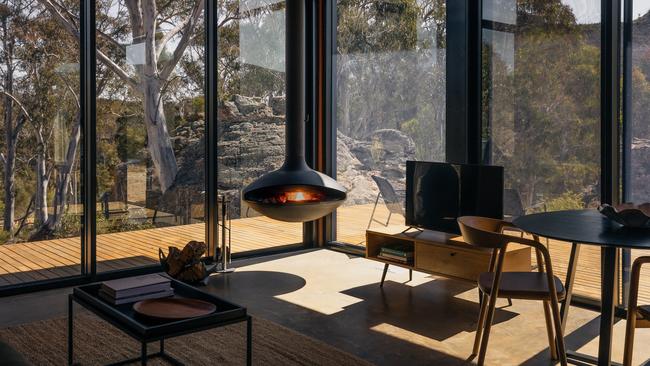
The cabins’ serene interiors are also testament to Cara’s designer eye. A suspended Aurora fireplace hangs from the tallow wood-panelled ceiling in Wambal’s living area, while a muted eucalypt-green linen lounge sits on the heated concrete floor beneath a wall hanging of sculptured leaves made by Cara’s mother. A sleek black kitchenette, with cooktop, oven and coffee machine, occupies one side of the room. A smart TV is on offer, but I’m more taken with the cabin’s powerful telescope, which provides captivating viewing of bushland as well as the glittering night skies.
Sliding doors separate the living space from the bedroom, where a queen-size bed covered in dark grey linens faces the mountain view and a breeze wafts through louvred windows.
In the black-tiled bathroom, a freestanding tub positioned beside a panoramic window provides another spot to contemplate the outlook, the sense of relaxation enhanced by bath salts from Folkologie Rylstone and herbaceous Aesop bodywash and shampoo. Although there are plenty of activities to enjoy around Rylstone, arrive at the retreat with groceries, board games and walking shoes and you’ll find few reasons to leave.
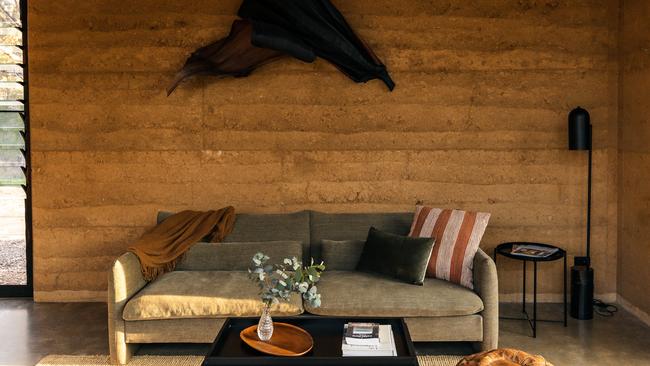
Before building the cabins, Payne consulted an Indigenous elder who told him of the existence of rock art on the property and uncovered many artefacts. Out of respect, only a traditional scarred tree, bark being a much-used Indigenous material, has been identified for guests to visit.
As part of the development application, an ecologist and zoologist also recorded the property’s flora and fauna, logging more than 70 species of birds, along with many other animals including platypus, echidnas, wombats and quolls. It’s a list Payne shares with guests, who are encouraged to explore a 2km walking track alongside the creek.
Intent on seeing a platypus or wombat, I walk across the property at dawn and dusk, the cries of magpies and cockatoos ringing through the treetops. While my quests are unsuccessful, I spot wombat holes and meet several mobs of wallabies as well as two large eastern grey kangaroos that lock eyes with me before bounding into the bush.
Payne speaks with joy about the wildlife, noting the retreat is home to “pretty much everything except koalas”, which are slowly returning to the district following the bushfires. “They’re about 10km away, so you never know, in three or four years there might be koalas here too.”
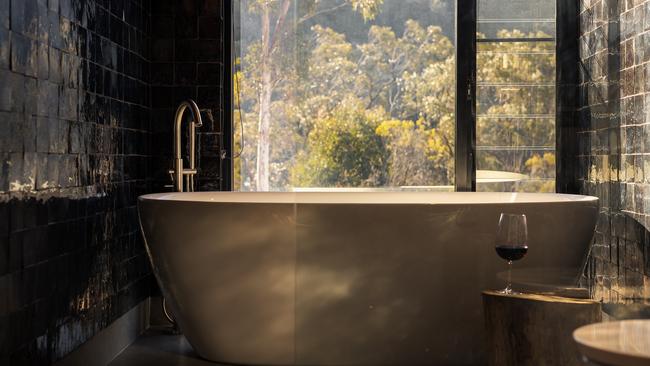
TO-DO LIST
Where to eat
The small town of Rylstone has some enticing dining options. The fabulous 29 Nine 99 Yum Cha and Tea House is renowned for its dumplings. There’s Mexican at Pepino’s, while the Globe Hotel turns out hearty meals. Head to Saffron Kitchen for good coffee and tasty jaffles.
Where to shop
Dating back to the 19th century, Rylstone’s main street houses some interesting stores, Folkologie homewares, Retro Records and the Convent and Chapel Wool Shop among them.
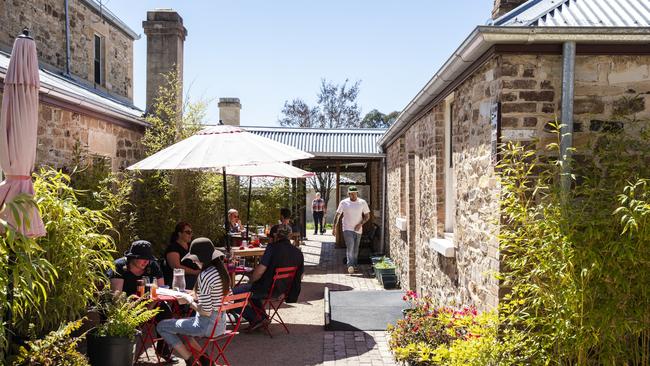
Where to drink
In a region known for its grapes, Rylstone’s offerings include Naked Lady vineyard and the award-winning De Beaurepaire Wines. A 40-minute drive will deliver you to more than 30 cellar doors near Mudgee.
Where to walk
Drive to Ganguddy-Dunns Swamp, a picturesque lake surrounded by stunning pagodas in Wollemi National Park (pictured). North of Rylstone, Ferntree Gully offers walks through beautiful rainforest known for its rock formations, ferns and orchids.
Essential info
Wollemi Retreat is 14km from Rylstone and about a three-hour drive from Sydney.
Wambal and Winyu cabins each accommodate two people and are priced from $390 a night, plus an $80 cleaning fee. Two-night minimum stay applies. The property’s three-bedroom house is available midweek and can be booked with a cabin on weekends.
Libby Moffet was a guest of Wollemi Retreat.
If you love to travel, sign up to our free weekly Travel + Luxury newsletter here.

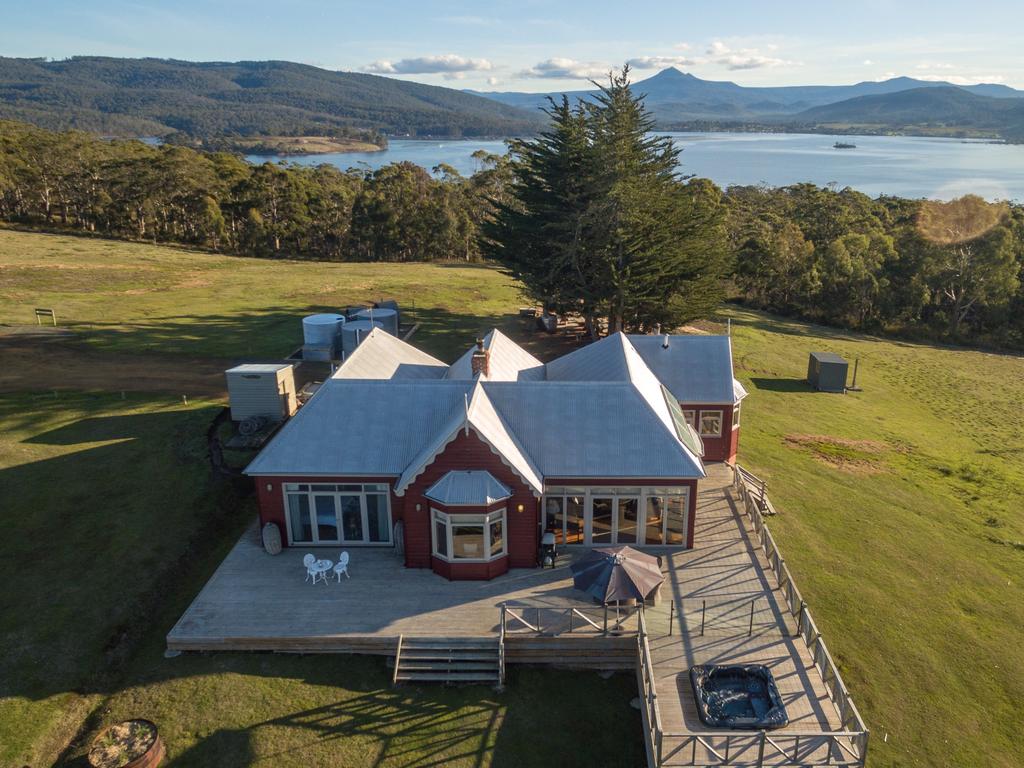
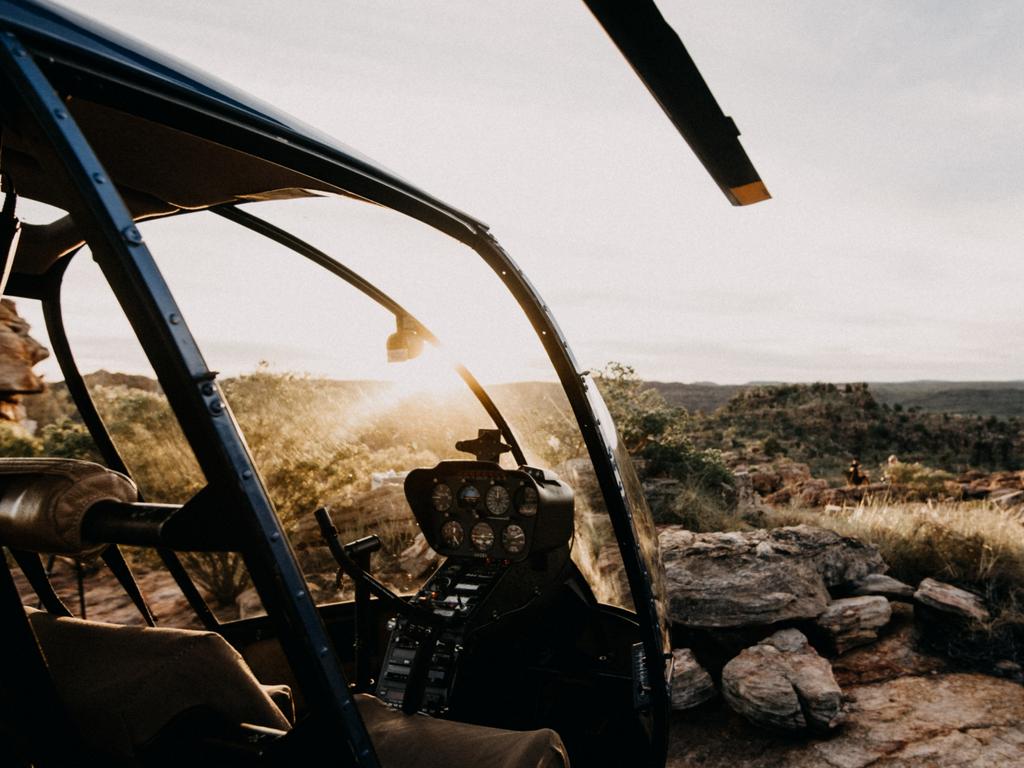
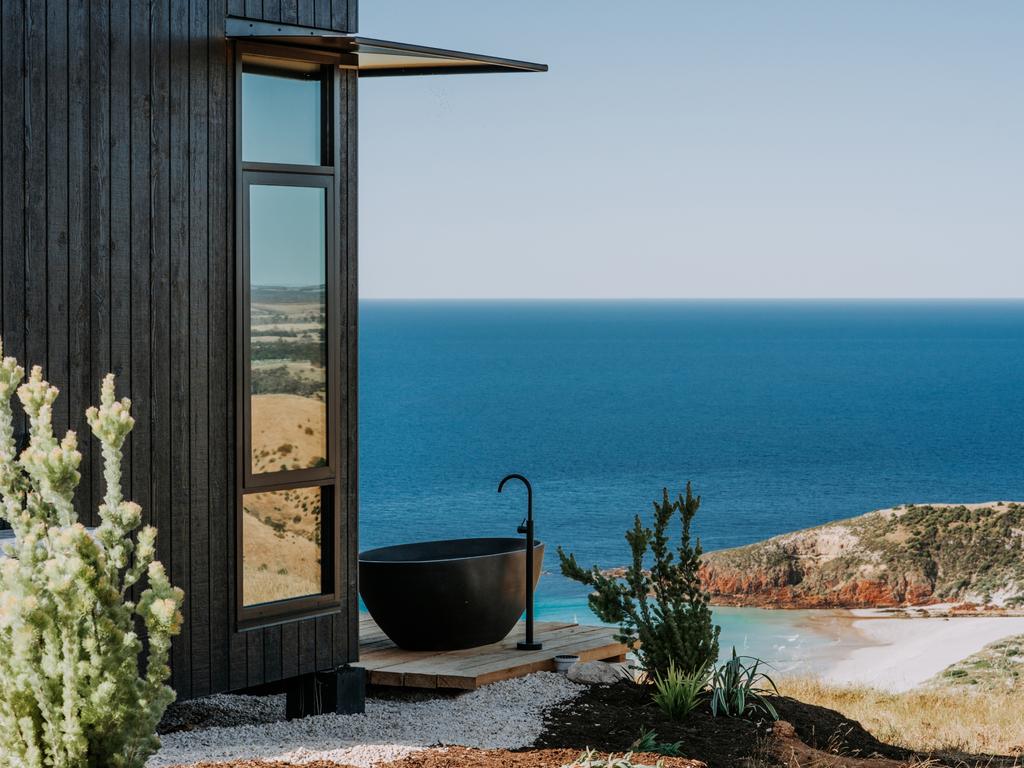
To join the conversation, please log in. Don't have an account? Register
Join the conversation, you are commenting as Logout